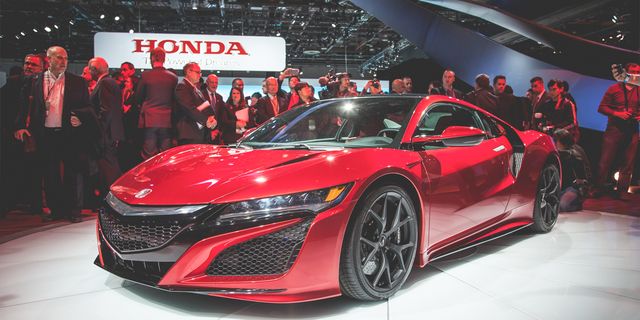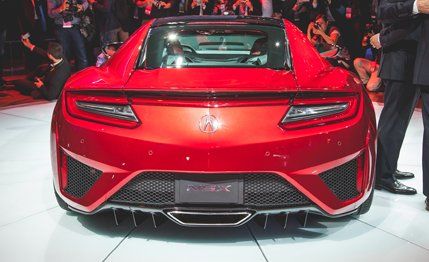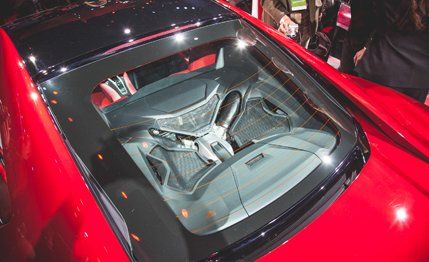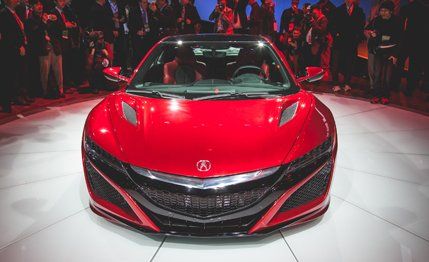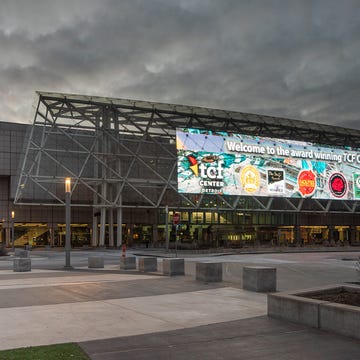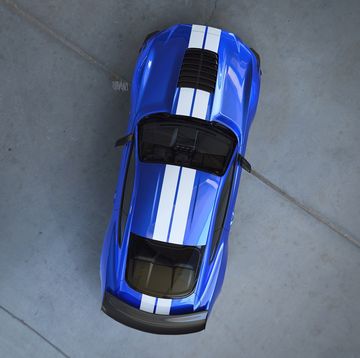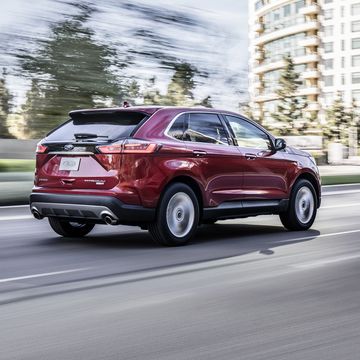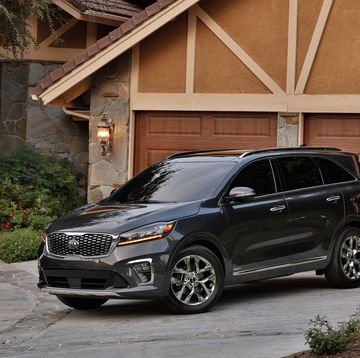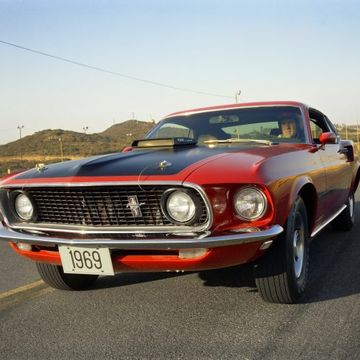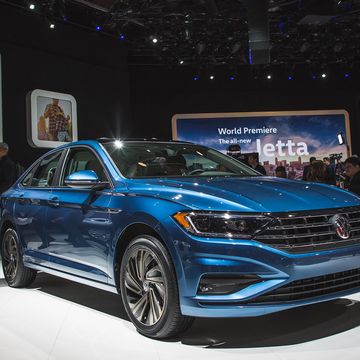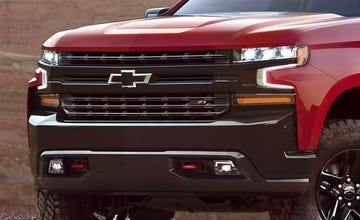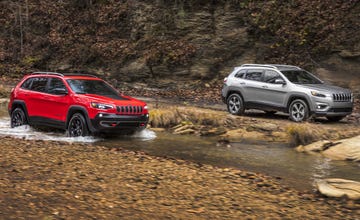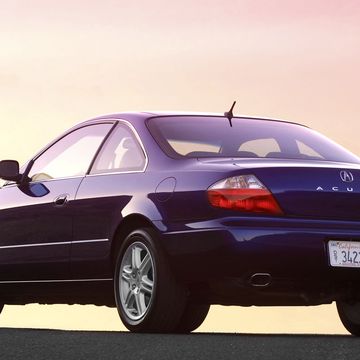Exactly one quarter-century has passed since an upstart Japanese luxury car brand named Acura introduced an ambitious mid-engine sports car called the NSX. Sold in other markets as a Honda, the aluminum Acura NSX was light, stylish, and fast, yet its less sexy qualities—everyday drivability, friendly ergonomics, and Honda reliability—are what ended up turning the exotic-car world on its nose. From that moment on, Ferraris and Porsches couldn’t get away with being tempestuous, occasional-use money pits. The NSX was the world’s first everyday exotic, one that cost a fraction of its mid-engine competitors.
But Acura did little to evolve the NSX over the years, and alas, it was a relic by the time Acura finally pulled the plug in 2005. Ever since, NSX enthusiasts (ourselves included) have pined for a second act, but Acura made the world wait, having shifted its focus to building decent, if not exactly stimulating, crossovers and sedans. Then, three years ago at the 2012 Detroit auto show, Acura trotted out a striking, mid-engine concept bearing the NSX name and confirmed that it would indeed be built—in America, no less! Now, following countless subsequent auto-show appearances, spy shots, camo’d prototypes doing fly-bys at racing events, the debut of the NSX Concept-GT race car, and one ugly fire on the Nürburgring, Acura has finally shown us the 2016 NSX exactly as it will roll out of its Marysville, Ohio, Performance Manufacturing Center later this year. The second coming of the NSX is upon us.
My, How You’ve Grown!
While the overall shape hasn’t changed since the NSX concept cars started floating around, the production version has grown more than three inches in length, one inch in width, and about a half inch in height. Compared with the original NSX, it is considerably larger, as well, particularly in width, up by 5.1 inches, and wheelbase, which has grown by 11.0 inches. Its space-frame structure is comprised of aluminum, high-strength steel, and “other advanced materials,” and the floor is carbon fiber. Acura did not provide estimated curb weight, but we reckon it’ll tip the scales at about 3600 pounds (in 1994, we weighed an NSX at 3030 pounds).
The car’s exterior details have been refined and refined some more, resulting in a car that looks finished, sophisticated, yet even more extreme. Up front, the concept’s chunky, five-block headlamps have been replaced by skinny rows of six LEDs underscored by an even thinner strip of LED DRLs, while redesigned ducts and filaments within the fascia have rendered Acura’s much-maligned “power plenum” grille treatment to a mere chrome strip. (Hooray!) The body panels are made of aluminum and SMC (sheet-molding compound), and they include a flying-buttress-style C-pillar that drops about halfway down the body side to accommodate the gaping engine-air intake. Out back is a thin band of taillamps spanning the width of the car, while the bumper contains a trio of massive air extractors and diffuser vanes bracketing center-mounted exhaust pipes. And in a nod to the original NSX, the debut car was rendered in NSX red with a contrasting black roof. A carbon-fiber roof will be optional.
The ultra-thin-spoke wheels measure 19 by 8.5 inches in front, 20 by 11 inches in back, and are wrapped by 245/35 and 295/30 Continental ContiSportContact tires. Tucked behind them are six-piston front and four-piston rear calipers clamping carbon-ceramic rotors.
Dramatic Interior
The visual drama continues inside. The low dashboard features exposed aluminum structural components covered by padded, black-and-red-stitched leather panels. A TFT instrument cluster is nestled behind a highly sculpted steering wheel with flattened upper and lower sections. Acura is very proud of one particular feature of the new NSX, which also happens to be one of our favorite aspects of the original car: the thin windshield pillars, which are meant to facilitate a panoramic view of the road ahead, contributing an impression of lightness.
The original NSX made news also with its easy ingress/egress, as well as its ergonomic simplicity—even using components from workaday Hondas. Now, as then, the NSX’s climate controls are refreshingly simple, and the screen perched above them appears suspiciously like the app-based infotainment system found in the Civic and the Fit, which, unfortunately, we aren’t overly fond of. We’ll hope that Acura has found a way to finesse the system’s fussier logic paths—we would hate it to be a blight on an otherwise stellar-looking cabin.
High-Po Hybrid: Twin-Turbo V-6 + Three Electric Motors = “North of 550 hp”
The NSX is powered by Acura’s first turbocharged engine since the original RDX crossover and is only the company’s second foray into forced induction in its U.S.-market vehicles. Acura (and parent company Honda) has long preferred noodling with its VTEC valvetrains rather than turbo- or supercharging its four- and six-cylinder engines in order to boost their output. But these days—especially with supercars—natural aspiration is simply not enough. Therefore, not only is the NSX’s 75-degree, dry-sump V-6 twin-turbocharged, but the engine is supplemented by three electric motors, one sandwiched between the engine and the nine-speed dual-clutch automatic transmission, and one at each front wheel. Acura did not reveal the displacement of the V-6, nor output figures for the engine or the electric motors, but Acura spokesperson Jessica Fini confirmed that total system output will be “north of 550 hp.”
With hybrid power going to the back wheels and pure electric power up front, the NSX features a so-called “Sport Hybrid Super-Handling All-Wheel Drive” system, much like that in the RLX hybrid, only reversed. As such, the car uses front-axle torque vectoring and a launch mode for ultimate stoplight getaways. Also, like the new TLX, the NSX gets Acura’s Integrated Dynamics System, which aligns powertrain and chassis responses, as well as engine sound, along preset levels: The settings include Quiet (which relies solely on battery power at speeds up to 50 mph), Sport, Sport+, and Track, the last unlocking “the full spectrum of its performance capabilities.”
Pricing has yet to be finalized but is expected to start in the “mid-$150K range,” according to Fini, with production starting this fall and deliveries to follow later in the year.
After hitting a series of singles and doubles in recent years, we predict that Acura will hit a home run with the new NSX. And we hope that its halo effect will invigorate Acura’s product planners and designers as much as its customers, who have been waiting a very long time for a car as exciting as this to finally emerge.

